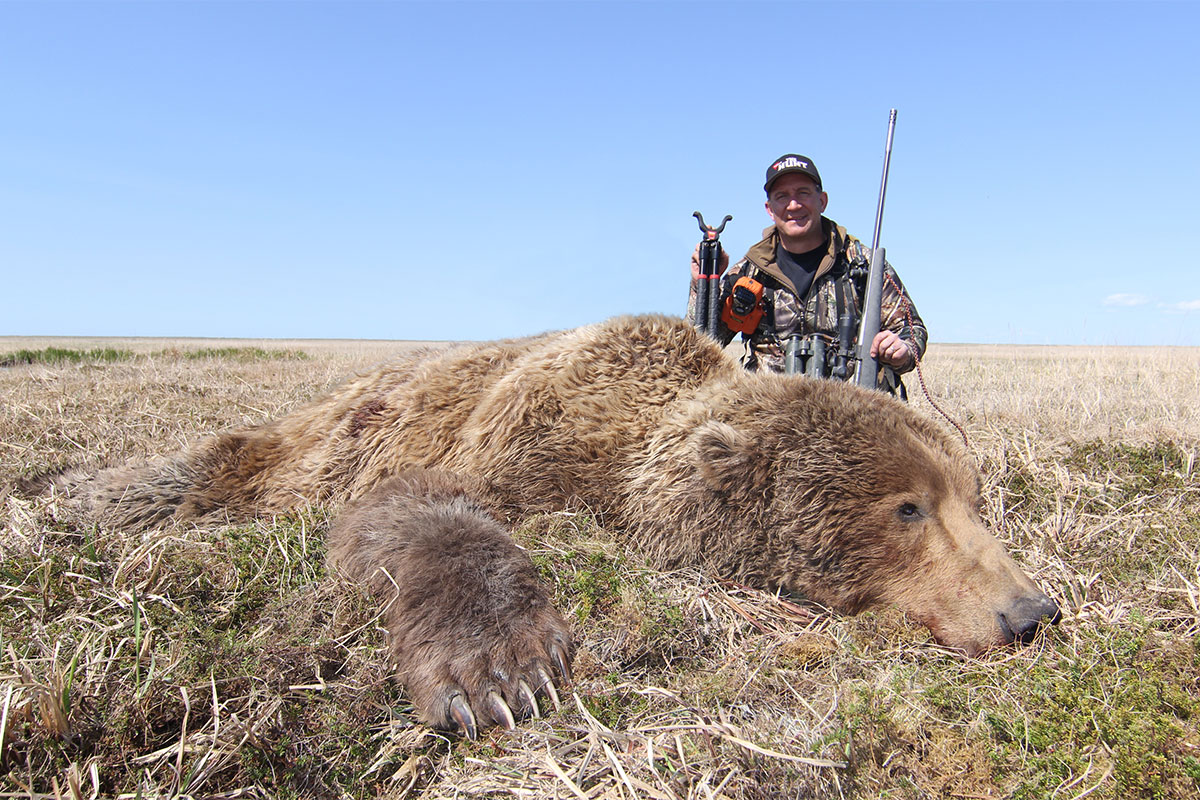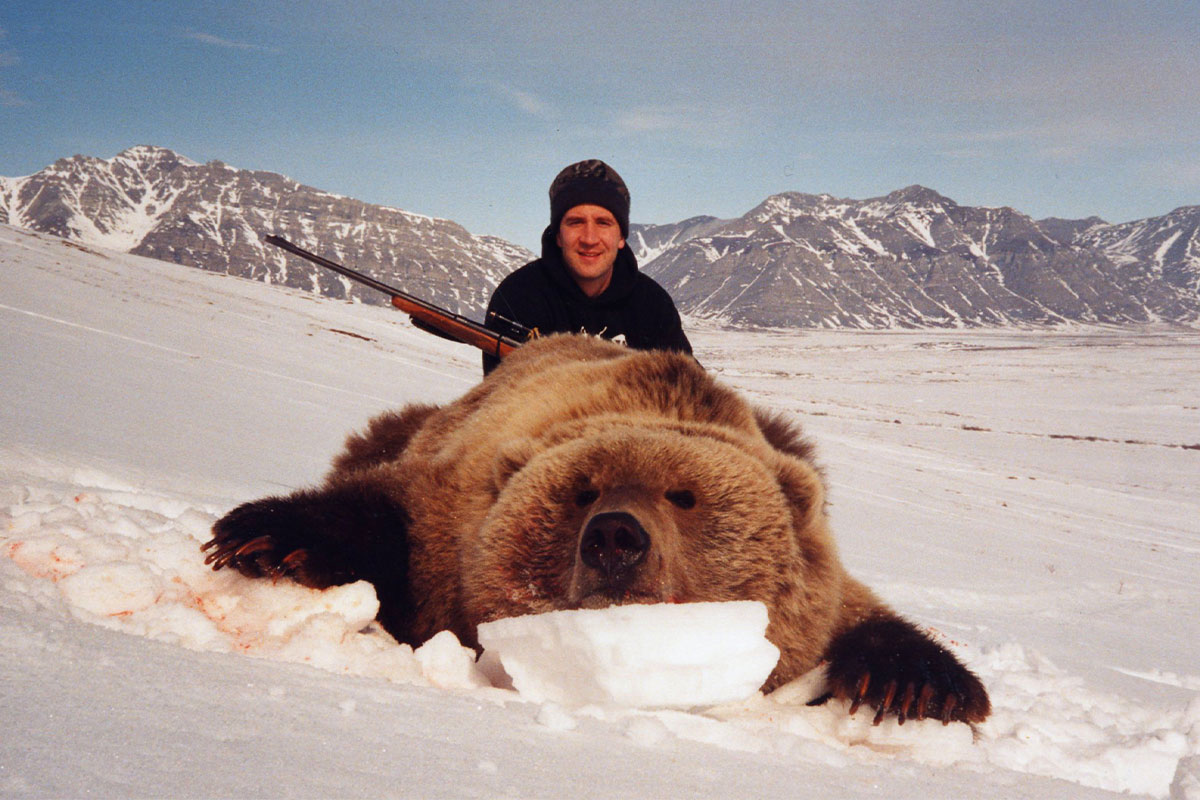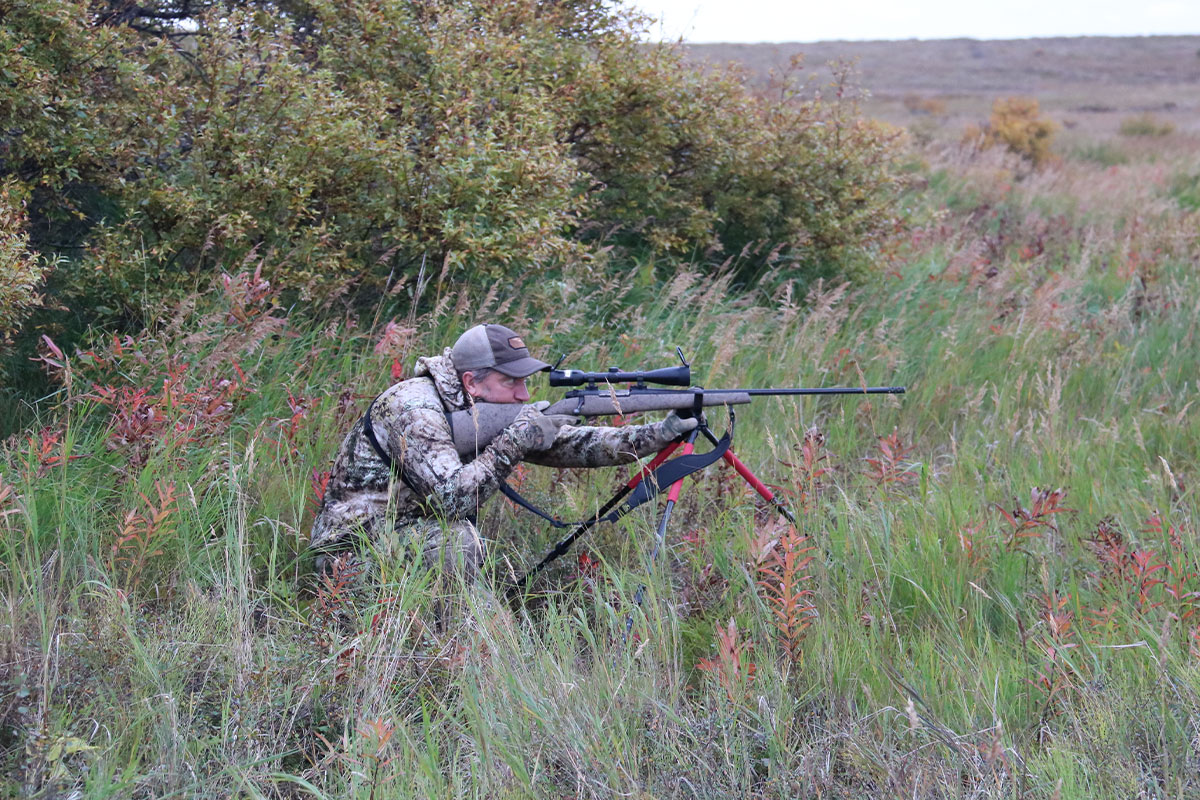
October 30, 1966. That’s the day my grandpa suffered a massive heart attack while hunting blacktail deer near our Oregon home. He collapsed in his favorite spot, against a stump from where he’d shot many big bucks. Cradled in Grandpa’s arms was his trusty pre-64 Winchester Model 70, chambered in .30-06. I never got to know Grandpa. I was two years old when he died. But I did get to know is favorite rifle, intimately. When I turned 12 years old my grandmother gifted me his rifle. I wasn’t big enough to shoot it for the first two years, but after that, it became my go-to rifle for the next two decades.
It was the only rifle I took when my wife and I moved to Alaska’s high Arctic in 1990, where we lived a semi-subsistence lifestyle. With Grandpa’s .30-06 I took numerous caribou, Dall sheep, moose and grizzly bear. I even killed a man-eating polar bear with it using 220 grain hand loads. I did all my own hand loading back then, mostly Nosler Partitions with a mix of other bullets to fit the game being hunted. In the Lower 48 the trusty ’06 also took elk, black bear, and several deer. I loved that rifle, and still regard the .30-06 as one of the best all-around big game calibers ever built.

Which rifles are best for hunting North America’s big game has been a point of discussion for decades. The subject continues to grow in popularity with the ongoing development of non-traditional, what are called wildcat, calibers. The trusted .30-06 is still a hard one to beat when it comes to an all-in-one rifle, but some hunters consider it heavy on the recoil. I’ve seen multiple Cape buffalo fall to a .30-06 in Africa, as well as red stag in New Zealand and water buffalo in Australia. A friend took all of North America’s 28 big game animals using his coveted .30-06.
As with any big game rifle, shot placement is everything. A thorough understanding of animal anatomy is also necessary and you must trust the gun and bullets you choose, knowing they will do their job. You have to be able to shoot accurately and with confidence, too. Fail to master these key points and it doesn’t matter what the best all-around caliber is for hunting big game in North America, for a lack of understanding and execution will not be compensated for by the gun and bullet you choose.
Nearly 20 years ago I was hired to host hunting TV shows. It was my full-time job for 14 years. I’ve been writing full-time for over two decades. Some years I hosted two TV shows which meant going on 60 or more big game hunts a year. I’ve been fortunate to hunt in many parts the world, taking numerous big game animals. Included in the tally are multiple cull hunts in Africa and management hunts in the South Pacific and the U.S. These aren’t bragging points, they’re a resume built on experience, not internet research and shooting paper.
Thompson Center Arms was the firearms sponsor of one TV show I hosted. That’s when I was introduced to the .30 TC. Teamed with custom 165 grain SST Hornady ammunition, it was one of the best calibers I’ve ever shot. Once friends began seeing it’s performance, they, too, invested in a .30 TC Icon. Some of them still shoot it. I’ve seen it cleanly kill big Roosevelt bull elk, black bears, mule deer, whitetails, blacktails, wild hogs and more. My wife loves shooting this gun.
Globally, I’ve shot more big game with a .300 Winchester Magnum than any one caliber, so can best speak to its performance. With a Christensen Arms .300 Win. Mag’ I’ve taken leopard, eland, kudu, wildebeest and waterbuck in Africa; all tough animals. With Remington’s Model 700, Winchester’s Model 70 and Thompson Center’s Icon, all chambered in .300 Win. Mag., I’ve shot moose, several black bear, many deer, elk, mountain goat, African lion and loads of heavy-boned African plains game. I love the flat shooting performance of this caliber, which translates to precision accuracy if recoil doesn’t bother you.

Though it’s a bit much for deer, one of my favorite shooting rifles of all time is Nosler’s Model 48 chambered in .325 Winchester Short Magnum. This is a very accurate, extremely efficient elk gun and I love its performance on black bear, especially in rugged, brushy country. I wouldn’t hesitate using it on inland grizzly bear.
For big coastal grizzly bears-brown bears-I’m a fan of specialized calibers. The standby .375 H&H Magnum is hard to beat, and I’ve seen it perform well on these big beasts. I took my first brown bear with a Remington Model 700 chambered in .375 H&H and it did the job well.
I also took a massive 10’9” brown bear that aged out at 23 years old, using a Weatherby .338-378. This wildcat caliber was first introduced by Weatherby in the 1960s and reintroduced as a Weatherby production cartridge in 1998. It’s a flat shooting, long-range option that delivers impressive energy. It dropped the big brown bear with one shot at 325 yards, but I delivered an insurance shot just to make sure.
Recently I had my dream rifle built, one I’d use with confidence to hunt any big game animal in North America, save for brown bear and polar bear. Curt Mendenhall of Curt’s Custom Guns in Oregon, built me a 28 Nosler. It’s the best shooting, most accurate, lightest weight big game rifle I’ve shot in over 45 years of hunting. The recoil is also surprisingly minimal. Mendenhall chose a full titanium Pierce action for my 28 Nosler. The Benchmark match grade barrel sits in an MPI kevlar stock which weighs only 15-ounces. Hawkins Precision aluminum rings are machined with a 25 MOA to extend the range. A Triggertech completes the build. The rifle weighs in at 5.5 pounds.
Topped with a Trijicon AccuPoint 4-16×50 with a capped elevation adjuster, scope caps, scope dust cover and a slender custom sling crafted by Oregon Paracord, the total weight of this setup is a mere 7.25 pounds. I shoot 175 grain Nosler AccuBond Long-Range factory ammo moving at 2,900 FPS and have been elated with this bullet’s performance on every animals it’s hit, including elk, deer, black bear and a bighorn sheep a buddy shot.
If looking for a lighter caliber that’s built for deer and pronghorn, the .260 Remington is attractive. Nosler built a .260 that my sons grew up hunting with, and my wife loved shooting it. It’s a caliber that’s specialized for specific big game as well as the needs and desires of some hunters.

My dad’s favorite hunting rifle is a .270 Winchester. He’s taken many deer, elk, pronghorn, and black bear with it. The .270 Winchester is a necked-down version of the .30-06 Springfield, introduced in the 1920s. It’s a flatter, faster shooting caliber than the .30-06 and with less recoil. It’s very accurate. I’ve killed game with Remington’s Model 700 and Winchester’s Model 70, both in .270 Winchester, and like how they perform on a range of animals. These rifles are easy to handle, too.
Some calibers I’ve neglected, here, due to a lack of personal use. I’ve seen 7mms work great on deer, elk and moose. I’ve also watched the 6.8 Western handle multiple Roosevelt elk and black bears. Also, the 26 and 27 Noslers are very good. I’ve taken game with each of these calibers, but need more personal field testing.
With today’s variety of quality bullets, an increasing number of calibers qualify as a great, all-in-one rifles for hunting North America’s big game. Be it a single rifle you’re looking for or a reason to accumulate three, four or even five guns, there are plenty of options.
As has been the case for generations, what big game hunting rifle you choose comes down to personal preference and what you can shoot with confidence. Of course, there’s no substitute for accurate shooting-no matter the rifle being used-and this only comes with dedicated practice.








